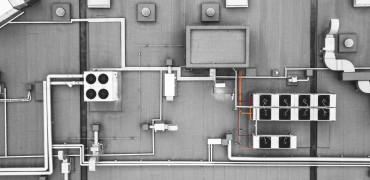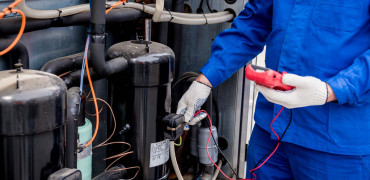The definition of ‘wellbeing’ in the workplace can be very broad.
It ranges from a fundamental requirement for physical safety (from dangerous equipment or chemicals, for example) to mental health and a sense of belonging in an organisation.
Of course, building services and HVAC don’t impact every aspect of human wellbeing, but they can make a difference in some fundamental elements of creating healthy and productive workplaces.
It was hard to feel productive as UK temperatures soared above 35oC in some areas.
Indoor air quality
Not least of these is indoor air quality (IAQ).
Ventilation specialists have been aware of the importance of good IAQ in occupied spaces for some time.
But the airborne spread of the Coronavirus brought home the importance of healthy indoor environments for most workers - and perhaps some building managers.
This was recognised by the British Council for Offices (BCO) in its June 2022 Position Paper for an update to its Guide to Specification.
In this, the BCO notes that the pandemic reinforced the need for good hygiene standards and “highlighted the important role played by effective ventilation in contributing to the health and wellbeing of occupants and in minimising the risk of airborne disease transmission.”
Mitsubishi Electric has worked with the Building Engineering Services Association (BESA) to produce a series of guides to achieving good IAQ.
These focus on providing advice for beginners and experts on the most critical first steps to consider when taking action in any building to improve indoor air quality.
Comfort
Other factors are at play when we think about ‘comfort’ in the workplace.
Temperature and humidity make a significant difference to comfort, as those of us who worked through the heatwave of summer 2022 will remember.
It was hard to feel productive as UK temperatures soared above 35oC in some areas.
At Mitsubishi Electric Service and Maintenance, we work with our clients to ensure that the systems they rely on to provide healthy and pleasant workplaces operate at optimal levels.
Our approach is planned preventative maintenance (PPM), which establishes scheduled visits by our expert engineers.
The benefit is that potential problems with equipment such as chillers, for example, can be spotted before they result in a breakdown that might cause comfort conditions in the building to change.
PPM means less operational risk, more predictable costs, extended equipment lifetime and better energy performance.
Less risk, longer life
This last point is increasingly important.
A balance must be maintained between ensuring that heating, cooling and hot water are provided to a building and achieving energy efficiency.
Mitsubishi Electric’s Service and Maintenance team increasingly find that our clients have carbon reduction targets too, and we can also provide support by checking on equipment operation at regular intervals.
And in our increasingly connected world, PPM can be combined with remote monitoring, so our service team can monitor the performance of chillers continuously, even when they're not on-site. This is an excellent solution for clients with large sites or multiple buildings in their portfolio.
Service and maintenance can make a significant and positive impact on building occupants. Not only do they support the continued operation of heating, cooling and hot water equipment, but they also ensure healthy indoor air quality.
At a time when more people are increasingly aware of their health around the workplace, a robust service and maintenance strategy is an investment in productivity and wellbeing.
Graham Martin is Business Development Manager in the Service and Maintenance team.




